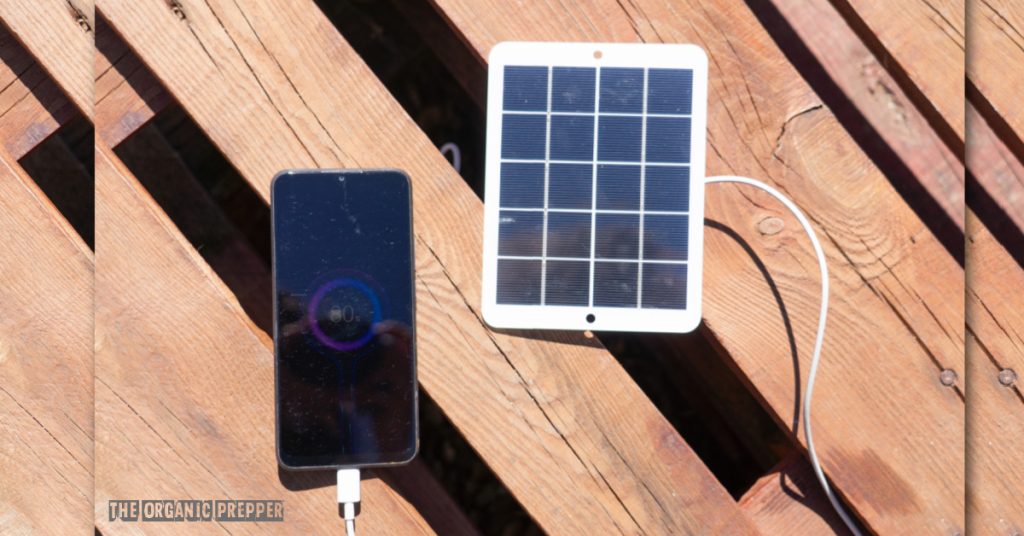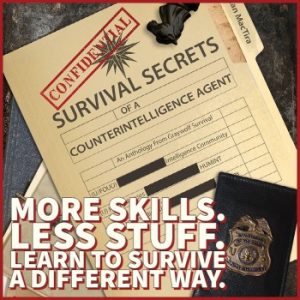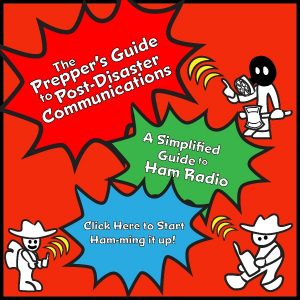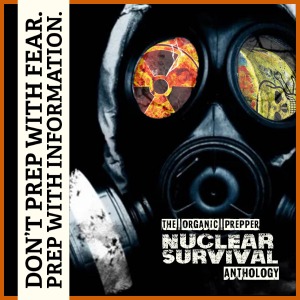If you're new here, you may want to subscribe to my RSS feed. Thanks for visiting!
Dear readers, I am surprised by the last few years (using an 8-year-old smartphone now) of how people, often in a tight financial situation, change their phones within 2-3 years, no matter what. Behind these practical instruments lies a significant amount of technology, and the programmed obsolescence mindset of manufacturers works against users, forcing them to replace their perfectly usable phones.
That generates a lot of waste!
Recent advances, such as fast wireless charging systems, are great for eliminating the need for fiddling with wires and plugs that will eventually fail. As a matter of fact, this is my main reason for changing my handphone in the near future.
Electronic waste is much worse than “regular” or “normal” waste. The highly toxic chemicals in the batteries and the potentially harmful effects once they leak into the water tables have deep effects on our health. The authorities are merely scratching the surface regarding this issue. In some Asian countries, there are already concerning statistics on the lithium content in the citizens’ bloodstream.
In a world stripped of cellular networks, Wi-Fi, and satellite signals—whether by a solar storm, EMP attack, or catastrophic societal collapse—your smartphone might seem like a useless brick.
However, perhaps another difficult situation will arise first while we wait for that type of scenario: a conflict, economic collapse, or a localized natural disaster.
As a middle-aged man, these pocket-sized, highly advanced computers and everything they can do never cease to amaze me. They constituted an almost impossible-to-imagine device barely 25 years ago. This ‘thingy’ has resulted in a dream come true for most of us. I won’t enumerate all that we can do with it here; instead, I will use this space to discuss how these devices can be utilized as a tool to expand and fortify our capabilities in the homestead or a survivor environment.
Now, let’s explore what we can do with our (perhaps discarded) devices when conventional networks are gone for good, diving deep into practical steps, tools, and real-world examples to ensure you’re prepared. This article is loaded with good information I hope you appreciate!
1. Offline Navigation & Survival Mapping
The first and probably one of the most important functions, other than calling or texting, is: Offline Navigation & Survival Mapping. As a negative trait, GPS satellites may still orbit above, but without maps or apps, you’re lost. However, as long as you have prevented it with a minimum of common sense, it’s easy to cover this. A solution can be pre-downloading topographic maps; apps like OsmAnd or Maps.me allow offline navigation, which is the feature that matches our goal here. Storing detailed maps of your region, including water sources, elevation changes, and evacuation routes. For example, you could use it much faster than a compass and map if you’re not that experienced with them.
Which many of us are not. My orientation skills are not too strong, so I consider this a priority.
- Celestial Navigation: Apps like SkyView (pre-downloaded) can turn your phone into a star compass. Align with constellations like Orion’s Belt or the North Star to find direction. This works when you are in the countryside and forced to walk at night.
- Track Movement: Enable airplane mode, then use your phone’s gyroscope and accelerometer to log routes. This is always useful if you want to have some caches out somewhere. Apps like GPS Logger (Android) or MotionX GPS (iOS) are used to produce “breadcrumb” trails. Mark safe zones, contaminated areas, or resource caches with geotagged photos. Awesome.
By the way, make sure you get a few gadgets that surely will make your life easier out there: a good solar charger, and a power bank will be necessary. I would go with at least one or two 40-60,000 mAh bank. Even a 20,000mAh power bank can keep a phone alive for several days.
Depending on how tactical you want to go, getting headsets for the group is a good idea for future tasks like scouting, or close-range communication. I personally don’t like wireless headsets, but there are some models used in working environments out there that maybe somebody will like.
2. Digital Library & Emergency Knowledge Bank
Books can get damaged by water, or set ablaze. But your phone? It’s a vault as long as you don’t lose it or break it. Make sure to use a good sturdy hard case.
An unexpected use I found, and a quite pleasant surprise was that it can be used as a plant ID Database. Using pre-loaded apps like PictureThis or iNaturalist to distinguish edible plants (wild garlic) from toxic lookalikes (death camas), this function should be a good improvement. Especially for guys like me who can’t tell a potato from a carrot.
- Document Scanner: Photograph critical records (property deeds, vaccine cards, maps) and encrypt them in a password-protected folder using apps like Cryptomator.
- Turn your phone into a ham radio cheat sheet. Store frequency lists, Morse code charts, and emergency protocols. There are many apps to translate Morse code nowadays.
3. Barter System & Local Communication Hub
This is an interesting one; but only usable in situations where there is no currency or internet. After the S has hit the F big way, all the trade relies on trust and record-keeping.
Barter Log: Use spreadsheet apps (like Simple Sheets) to track transactions: “1L water = 5 bullets, 3 eggs = 1 antibiotic dose.”
Bluetooth Mesh Networking: Apps like Bridgefy or FireChat let you send texts via Bluetooth/Wi-Fi Direct to devices within 200 meters—no cellular needed. (Mind you back in 2019, Hong Kong protesters used these apps to organize under government surveillance)
QR Code Currency: Generate offline QR codes (via QR Code Generator) to represent trade credits. Scan with another phone’s camera to “transfer” value.
Remove the SIM card to save power or put it in your new phone, and put the “survivor’s edition” phone in a Faraday cage when not in use to block EMP residual waves. With this, the establishment of a local network is way easier. (I could write more details about this if you ask for it in the comments!)
4. Medical Diagnostics & Emergency Care
When hospitals are overwhelmed or nonexistent, the best attention we can get is the one we can find.
- First Aid Guides: Apps like First Aid by Red Cross (pre-downloaded) provide step-by-step instructions for stitching wounds, treating burns, or performing CPR.
- Vital Signs Monitoring: with a $20 pulse oximeter that pairs with your phone (via Bluetooth), you have the capability to both track heart rate and blood oxygen levels. For any personnel with medical training, this is invaluable information to assess a patient’s condition.
- Telemedicine Cache: Store videos from your favorite channels for offline playback.
5. Security & Surveillance Tool
Your devices can execute a universe of applications; including motion detection, basic night vision, and many others.
- Motion Detection: Apps like Alfred turn old phones into security cameras. Set one up at your homestead entrance and receive alerts via Bluetooth.
- Night Vision: Use your camera with an IR illuminator (or a modified remote control) to see in the dark.
- Decoy Device: Load a dummy phone with fake data to distract thieves while hiding your primary device.
6. Environmental Monitoring
Some refining for our mobiles to complement our NOAA’s radios:
- DIY Weather Station: Use your phone’s barometer (found in high-end models) to predict storms. A sudden pressure drop often precedes severe weather.
- Radiation Detection: Pair with a $50 Geiger counter (via USB OTG) to monitor fallout zones.
- 7. Community Coordination & Democracy
Maybe this is an application out of the “ordinary”; but, as I have never seen it anywhere I thought it could be a good idea. Anarchy thrives without structure; and using phones to register votes with the proper apps, provides an extra layer of security to the process.
- Blockchain Voting: Use offline apps like Horizon State to conduct secure, tamper-proof elections for community leaders.
- Resource Database: Create a shared spreadsheet (via Bluetooth) to track food, medicine, and tools.
- Crisis Radio: Modify your phone’s FM chip (with apps like NextRadio) to broadcast alerts to nearby devices.
What We Can Do Now
For starters, get a good, rugged, sturdy, heavy-duty hard case to protect your device: fall protection, impacts, etc. The standard specification used by the military forces is MIL-STD-810G. Get a good screen glass protector as this is the weakest point in your device. You may want to get a couple of spares for the tactile interface, too.
- Download Critical Apps: OsmAnd for offline navigation, Kiwix for offline information storage, Bridgefy to send messages using your Bluetooth interfaces within a range of 100 meters, and Cryptomator secures and encrypts your sensitive data in your cloud service.
- Encrypt & Backup: Use VeraCrypt to encrypt your data drive; store backups on a Faraday-protected SD card. Be very careful with this process.
- Build a Faraday Cage: Line a metal ammo can with foam and some Al sheeting to shield your phone, memory SD cards, and thumb drives from EMPs.
- Practice Offline Skills: Test navigation, Bluetooth messaging, and solar charging before disaster strikes.
Your smartphone isn’t just a tool—it’s a great development of human ingenuity. Prep it now, give it a second life. There’s no need to wait for the grid to fall.
- Maybe you want to use some external lenses, to use them for surveillance activities.
- Wide-angle, macro, or telephoto lenses to level up your smartphone shots. How about a good device to enhance the marksman’s surveillance spotter field of view?
What do you think?
Making the most out of every single item is a trait that I believe every prepper should have. Gladly, new technologies give us tools that we can expand beyond the limits we never thought possible.
Do you use an outdated phone or some other similar device for yet another purpose?
Let us know in the comments and surprise us!
Thanks for reading, and remember, your sponsors help a lot to keep us going!
Stay safe, and keep tuned,
J.
About Jose
Jose is an upper middle class professional. He is a former worker of the oil state company with a Bachelor’s degree from one of the best national Universities. He has an old but in good shape SUV, a good 150 square meters house in a nice neighborhood, in a small but (formerly) prosperous city with two middle size malls. Jose is a prepper and shares his eyewitness accounts and survival stories from the collapse of his beloved Venezuela. Jose and his younger kid are currently back in Venezuela, after the intention of setting up a new life in another country didn’t go well. The SARSCOV2 re-shaped the labor market and South American economy so he decided to give it a try to homestead in the mountains, and make a living as best as possible. But this time in his own land, and surrounded by family, friends and acquaintances, with all the gear and equipment collected, as the initial plan was.
Follow Jose on YouTube and gain access to his exclusive content on Patreon. Donations: paypal.me/JoseM151














10 Responses
Hey, Daisy.
Bridgefy looks interesting but I prefer Briar for that sort of thing. It’s the most secure texting app out there.
It has the following advantages over Bridgefy:
– Works over Bluetooth AND WiFi
– When communicating over WiFi, uses the TOR network for ultra-secure messaging.
– Communication is only open to people you have registered with the app or who are introduced to you via someone previously registered.
– Messages cannot be transferred to another phone or copied (possibly a disadvantage).
Briar is available through the Google Playstore or F-Droid. A big disadvantage to Briar is it is not available to Apple phone users. If security is an issue though, you shouldn’t be using Apple products anyway since they cannot be secured against Apple servers.
Dear Woody,
I am sure Apple products offer a good advantage for many users. However I have long solved that equation regarding cost-benefit. Android community is now a whole ecosystem. If you want “prestige”, sure, go with Apple. Until your phone needs to be repaired. But it is not the place to discuss it, maybe I could write a different article, as the topic is extensive.
Thanks for the collaboration!
Hi, Jose. I liked your article even though I don’t own a portable communication device.
Incidentally, there seems to be a formatting glitch affecting “7. Communicating Coordination and Democracy.” This displays for me as a bullet rather than a heading. If this isn’t an artifact of my computing environment, perhaps Daisy can fix it.
Wow! So much to think about! This is great information. My only caution about storing account numbers, sensitive data, or other info is that currently your phone, EVERY phone, takes pictures of your screen every 5 seconds without you knowing, and uploads it to the cloud. I was warned about this in a class hosted by Forrest Garvin, and it is really important to be super careful about what you use your camera for. I do love the idea of downloading the maps, the nav tools, the first aid tools. Unfortunately my phone doesn’t have the massive storage availability that one would need for such. I have to clear off all my photos to make space.
The “feature” you are referring to is the Face ID unlock of Apple. It’s the infrared camera, not the regular camera, and it’s not sending it to the “cloud”.
More info – https://www.franksworld.com/2024/07/11/why-iphone-takes-your-picture-every-5-seconds/
With this, the establishment of a local network is way easier. (I could write more details about this if you ask for it in the comments!)With this, the establishment of a local network is way easier. (I could write more details about this if you ask for it in the comments!) YES, PLEASE.
I have loaded first aid apps for years. Never needed to use it though.
What I would truly love to have is a cable and and app on my Apple phone to let me connect and use a thumb drive as an external drive. Then I could load up all sorts of information on multiple thumb drives for use one drive at a time.
My phone is the third of this model, over five years old.
Dog ate the first, I broke the second.
Main use is entertainment, audiobooks and rarely music.
I have two others I was given saved in a metal can for after shtf use
with cables and charger.
I do keep maps updated regularly.
–
btw, great time to top off gas stores.
extra food/snacks.
things to drink for sanity.
backup personal info OFFLINE
Read this. I will test mine without connection to the grid. I use an old one for photo’s , bought a camera on a 5ft cable to use it as a tool. I know the compass, also the measuring device, the calculator.
How maps works without grid i do not know.
I have wondered: does anyone know if an old iphone like a 4 can be reactivated with a free software…this would open up a lot of possibilities. Also, anyone any experiance with the
“spy card”? prepaid card ( a ali express card for data that gives unlimited data for a one time payment….?)
It is a way to activate a phone without monthly payments.
Dear Duchesne,
That’ s why I mentioned that always Android is going to have advantages regarding Apple products and their model…Actually, perhaps someone out there surely could answer such an specific question.
Thanks for your comment!
good luck to you….you can write a book about survival….living it….good luck.